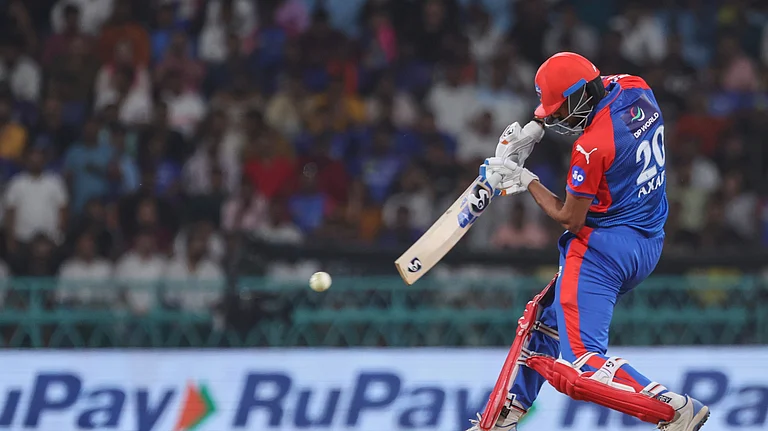SEVEN years ago, Suhas Awchat, a qualified psychiatrist, tied the knot withDeepa Mhambre, an incorrigible Goan senior customs officer. It was a union that was tochange the way Bombay ate.
Awchat, a pure vegetarian, stalked every gully in his mohalla in search of fish,prawns, clams, lobsters, sharks, squids cooked Goan style, to meet the demands of hisfish-famished wife. When he failed, he smuggled a chef from OConquoero (the infamousMapusa hotel where Charles Sobhraj was nabbed), and converted his polyclinic in Mahim, onthe road linking the airport to town, into a restaurant.
Thus was born Goa Portuguesa. It catered to a clientele that was becoming fed up ofChinese, Mughlai, Punjabi and Continental fare. The seafood revolution was on.
"There was just one other restaurant on Kataria Road when we opened shop,"says Awchat. "Today, there are 13 of them, and all but a few of them serve seafooditems."
Its the same story in the rest of this sea-side city. Admittedly, the bestseafood restaurants in Bombay Trishna, Apoorva, Mahesh, Fountain Inn arelocated down-town, and the suburbs are still to witness the spurt, barring honourableexceptions like Only Fish, Sindhudurg and Gomantak. Undoubtedly, Mumbaikars have taken toseafood like, well, fish to water.
Bombay, situated as it is on the Arabian Sea, always did have a seafood culture . Butmost older seafood eat-outs were pokey little joints, not very different in style from thehundreds of Udipis that dot the metro. And most doled out other meats chicken,mutton and beef along with their seafood.
The new seafood restaurants springing up today, exclusively dish out fish andfish items. For long the fifth or sixth preference of those eating out,seafood is fast moving up the citys menu cards.
Says Praveen Shetty of Apoorva, a downtown Mangalorean restaurant: "Sea-food islight on oil, ghee, fats and spices. That is why even time-strapped professionals do notmind eating out, even if they have busy days lined up ahead of them." Adds well-knownc a rtoonist Mario Miranda: "All that propaganda against cows and bulls seems to beworking."
But the colour of its meat assuring low fat, low cholesterol for thefitness-conscious pros imbibing it is just one reason for the fishy success inBombay. Says film-maker N. Chandra, a Goan who cannot survive without the crustaceans andother scaly creatures that grow in the citys blue backyard: "Justserving fish, prawns or pomfret doesnt a seafood restaurant make. Theres moreto it atmosphere, ambience, authenticity." Restaurants serving fish haveunabashedly hiked up prices and have gone upmarket in a bid to provide the rightatmosphere.
Goodbye tacky, hello authenticity. "I dont eat better in Goa," sayssinger Remo Fernandes. "You dont know if youre in Bombay, Panjim orLisbon," is Behram Busybee Contractors verdict.
That plus quality food served quickly is netting in the big stars such asAmitabh and Jaya Bachchan, and Sunil and Marshneil Gavaskar as well as videshi visitorswho include staff members of the British High Commission.
In spite of the boom, most Bombay seafood joints are Mangalorean rather than Goan or,to a lesser extent, Malwani Konkani Maharashtrian. The three cuisines are milesapart accounting for their differences. Goans use coconut pulp or vinegar.Mangaloreans grind the coconut in coriander and tamarind.
Each, however, has its own USP. Malwani kokam supposedly cools your system. Goanbibinca praised by its patrons as the worlds sweetest sweetis made of coconut milk, honey and pure ghee. The hot dessert follows the maincourse. And patrons also have the choice of biting into mandoli, the worldslongest plantain.
Proprietors if not taking the menus down themselves, as the brothers who runAnandashram do, are close at hand clicking pictures of the glitterati who swivel throughtheir doors. Author Shobha De, Indian Express scion Vivek Goenka, journalistRahul Singh, models, film-folk, ad-men and industrialists. You name them, theyllhave been captured on film, sating themselves on seafish.
Awchat claims to have converted some 12,000 people to seafood in the past seven years.Goa Portuguesa which seated 48 at launch, has been redesigned to accommodate twice asmany. Business is booming, with most restaurants earning upwards of Rs 40,000 a day.Nowhere is the boom more obvious than from the frenzy with which establishments areperiodically redone and redesigned. Apoorva got itself a fresh exterior late last year.Mahesh was next. Trishna is doing the same.
Bombay restaurateurs have discovered the shortest route to a customers heart (andwallet): by providing fresh good food in the right ambience.






















